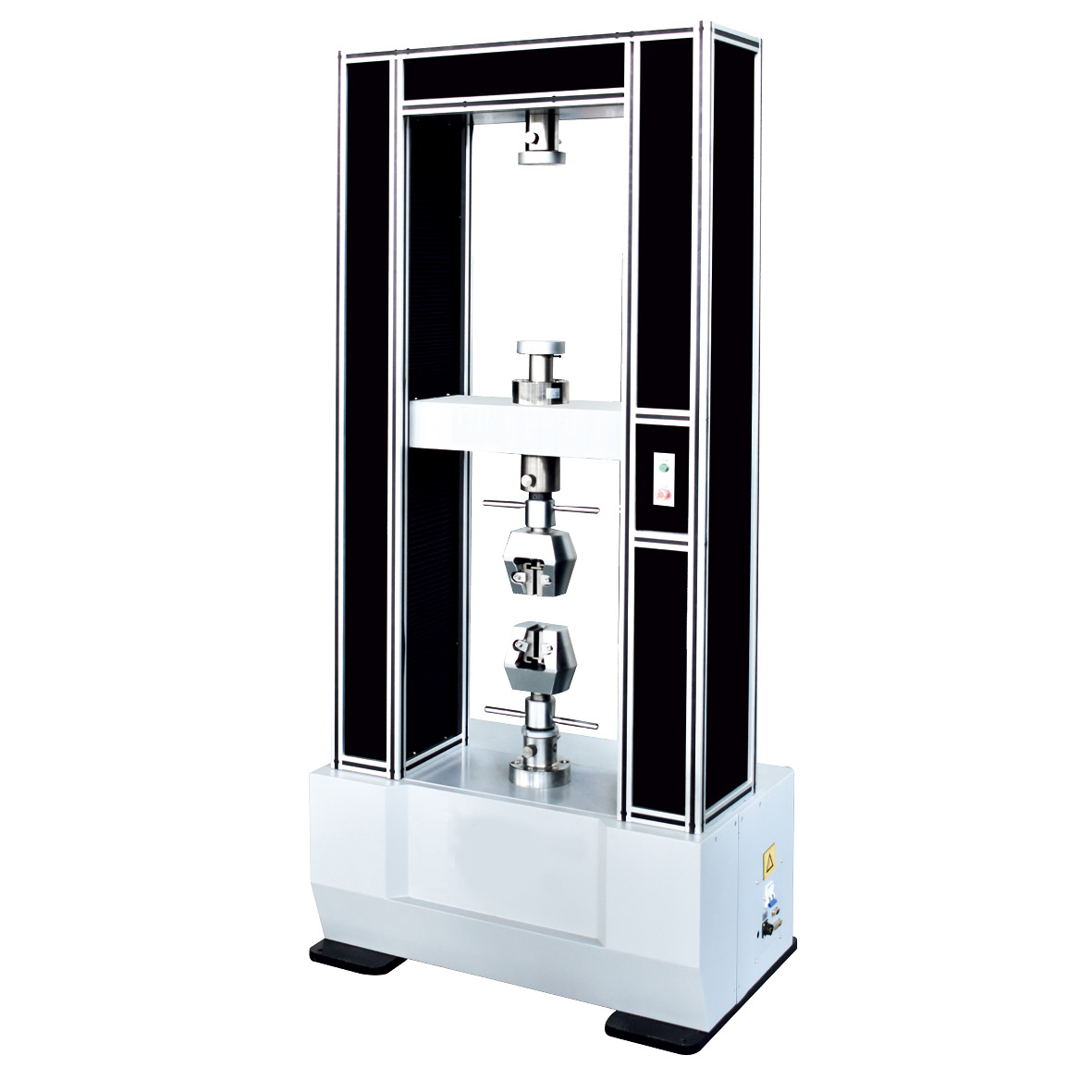How much do you know about the functions and operating procedures of the electronic universal testing machine?
 The operating steps of the electronic universal testing machine
The operating steps of the electronic universal testing machine
1. Turn the main switch on.
2. According to the sample, select the measurement range, hang or remove the pendulum thallium on the pendulum rod and adjust the handle of the buffer valve to align with the marking line.
3. Put the corresponding chuck into the upper and lower jaw seat according to the shape and size of the sample.
4. The electronic universal testing machine rolls and presses the recording paper (graph paper) on the drum of the tracer. This item is only performed when needed.
5. Turn on the oil pump motor, unscrew the oil delivery valve to raise the test bed by 10 mm, and then close the oil valve. If the test bed is already in the raised position, there is no need to turn on the oil pump to deliver oil first, just close the oil delivery valve. .
6. Clamp one end of the sample in the upper jaw.
7. Start the oil pump to adjust the pointer to the zero point of the dial.
8. Start the lower jaw motor, lift the lower jaw to an appropriate height, and clamp the other end of the sample in the lower jaw, taking care to make the sample vertical.
9. The electronic universal testing machine puts down the drawing pen on the push rod and enters the drawing preparation state (only when drawing is required).
10. According to the loading speed required by the test, slowly unscrew the oil delivery valve to perform the loading test.
11. After the sample breaks, close the oil valve and stop the oil pump motor.
The function of the electronic universal testing machine
1.The electronic universal testing machine adopts Taiwan AC frequency conversion motor, which has stable and reliable performance and has protection devices for overcurrent, overvoltage, overspeed, and overload. The speed regulation ratio can reach 1:5000.
2. The electrical control circuit refers to the international standard, conforms to the electrical standard of the national testing machine, and has strong anti-interference ability, which ensures the stability of the controller and the accuracy of the experimental data.
3. Condition saving: test control data and sample conditions can be made into modules, which facilitates batch testing.
4. Automatic transmission: The speed of the moving beam during the test can be changed automatically according to a preset program or manually.
5. Automatic calibration: The system can automatically realize the calibration of the accuracy of the indication.
6. Process realization: The test process, measurement, display and analysis are all completed by the microcomputer.
7. Batch test: For samples with the same parameters, they can be completed in sequence after one setting.
8. Test software: Chinese WINDOWS interface, menu prompt, mouse operation.